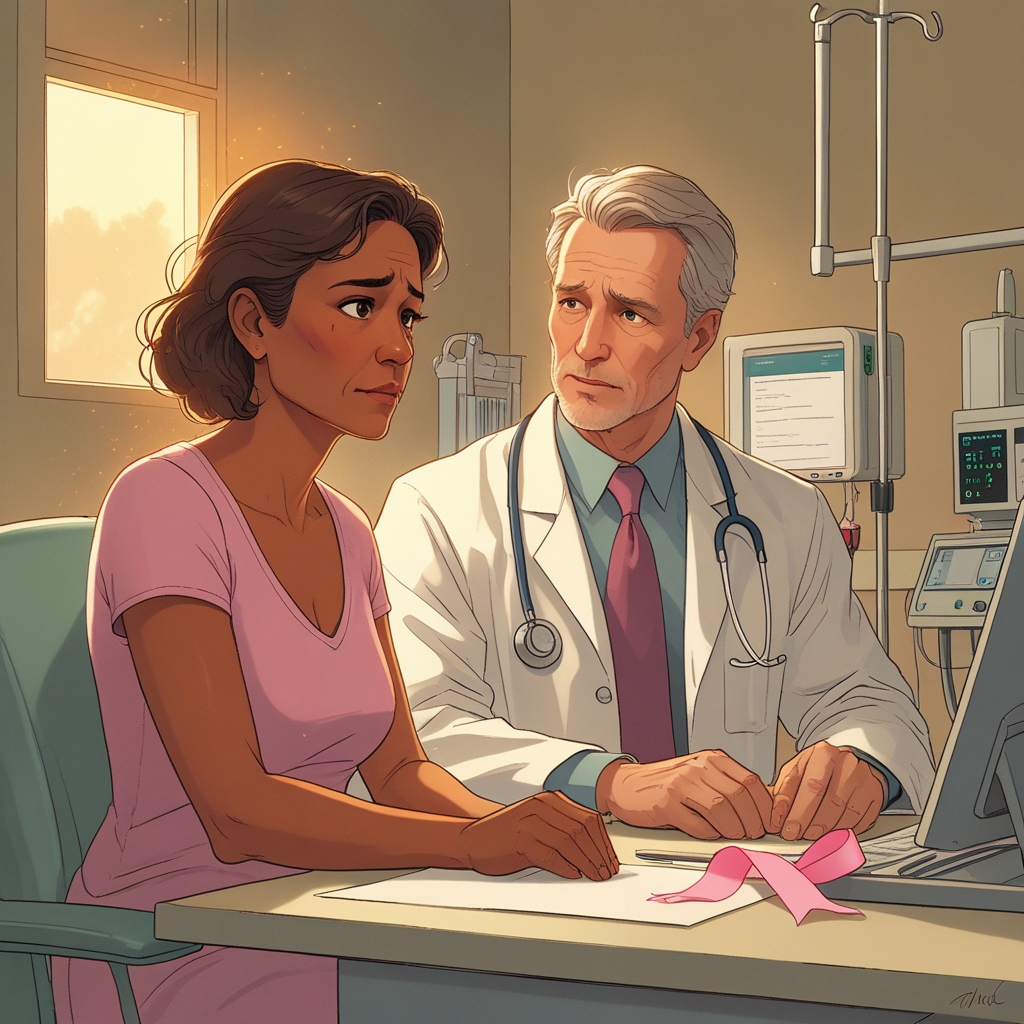Breast cancer isn’t just some distant medical term for me—it’s personal. My aunt was diagnosed five years ago, and let me tell you, it turned our family upside down. One day she was fine, the next, she was facing surgeries, chemo, and a mountain of fear. But here’s the thing: knowledge saved her. Catching it early made all the difference.
That’s why I’m writing this. Because if I can help even one person spot the signs early or understand their risk, it’s worth it. So, let’s break it down—no jargon, just real talk.
What Is Breast Cancer?
The Basics
Breast cancer happens when cells in the breast go rogue. They multiply uncontrollably, forming tumors. If left unchecked, these cells can spread (metastasize) to other parts of the body.
How It Develops
Most breast cancers start in the milk ducts or lobules (the glands that produce milk). Sometimes it’s slow-growing; other times, it’s aggressive. But here’s the kicker—not all lumps are cancerous! Some are benign (harmless), but you gotta get them checked.
Types of Breast Cancer
Invasive vs. Non-Invasive
- Non-invasive (in situ): Cancer stays put (e.g., DCIS—Ductal Carcinoma In Situ).
- Invasive: Cancer spreads into surrounding tissue (e.g., IDC—Invasive Ductal Carcinoma).
Common Subtypes
- ER/PR-positive: Fueled by hormones.
- HER2-positive: Aggressive but treatable with targeted therapy.
- Triple-negative: Tough to treat (lacks common receptors).
Who’s at Risk?
Genetics & Family History
If your mom, sister, or aunt had it, your risk goes up. But—most breast cancers happen in people without a family history. Weird, right?
Lifestyle Factors
- Obesity: Fat cells produce estrogen, which can feed some cancers.
- Alcohol: More drinks = higher risk.
- Late pregnancies or no pregnancies: Hormonal changes matter.
Signs and Symptoms You Should Never Ignore
Lumps & Changes
- A hard, painless lump (though some are tender).
- Swelling, dimpling, or nipple changes (like inversion).
Less Obvious Red Flags
- Sudden nipple discharge (especially bloody).
- Unexplained weight loss or fatigue.
Pro tip: Don’t panic if you find a lump—most aren’t cancer. But do get it checked ASAP.
How Breast Cancer Is Diagnosed
Mammograms & Ultrasounds
Mammograms are like X-rays for your boobs. They spot tiny lumps before you can feel them. Ultrasounds help tell if a lump’s solid (more concerning) or fluid-filled (like a cyst).
Biopsies Explained
If something looks sus, docs take a tiny tissue sample. It’s not fun, but it’s way better than not knowing.
Stages of Breast Cancer: What Do They Mean?
Stage 0 to Stage IV
- Stage 0: Pre-cancer (DCIS).
- Stage I-II: Early, treatable.
- Stage III: Spread to lymph nodes.
- Stage IV: Metastasized (advanced).
Why Staging Matters
It guides treatment. Early-stage? Maybe just surgery. Late-stage? Likely chemo + other therapies.
Treatment Options: What’s Out There?
Surgery
- Lumpectomy: Remove the tumor + a little margin.
- Mastectomy: Remove the whole breast (sometimes both).
Radiation & Chemo
- Radiation: Zaps leftover cancer cells.
- Chemo: Poison for cancer (but also your hair—ugh).
Hormone Therapy & Immunotherapy
Pills that block estrogen (for ER+ cancers) or boost your immune system (for some HER2+ cases).
Living with Breast Cancer: The Emotional Rollercoaster
Mental Health Struggles
Depression, anxiety, and “scanxiety” (waiting for test results) are real. Therapy helps.
Support Systems That Help
- Support groups (online or in-person).
- Friends who listen instead of saying, “Stay positive!”
Prevention: Can You Lower Your Risk?
Diet & Exercise Tips
- Eat more veggies, less processed junk.
- Move your body—30 mins/day cuts risk.
Regular Screenings
- 40+? Get mammograms yearly.
- High risk? Start earlier + MRIs.
Myths About Breast Cancer Debunked
“Only Women Get It”
Nope! Men can get it too (about 1 in 833).
“Deodorant Causes It”
Zero proof. Stop worrying and keep using your Dove.
My Aunt’s Battle: A Personal Story
She found a lump during a shower. Stage II. Surgery, chemo, tears—but five years later, she’s thriving. Early detection saved her.
Advances in Research: Hope for the Future
- Liquid biopsies: Detect cancer in blood.
- Better drugs: Fewer side effects.
How to Support Someone with Breast Cancer
What to Say (And What Not to Say)
- Do: “I’m here for you.”
- Don’t: “Everything happens for a reason.”
Practical Ways to Help
- Cook meals. Drive them to appointments. Just show up.
Conclusion: Knowledge Is Power
Breast cancer’s scary, but you’re not powerless. Learn the signs, get screened, and support those fighting. My aunt’s story could’ve been tragic—but thanks to awareness, it wasn’t.
What is Breast Cancer Staging?
FAQs
- Can men get breast cancer?
Yes! About 2,700 men are diagnosed yearly in the U.S. - Does breastfeeding reduce risk?
Yep—12% lower risk per year of breastfeeding. - How often should I do self-exams?
Monthly, but don’t stress over technique—just know what’s normal for you. - Is chemo always necessary?
Nope! Early-stage cancers might skip it. - What’s the survival rate?
90%+ for early-stage, but drops if caught late. Get screened!
